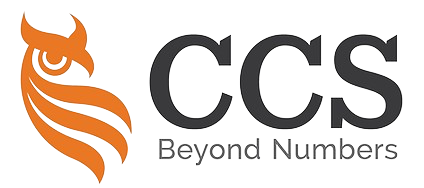API | Application Programming Interface
Application Programming Interface (Application Programming Interface), or API for short, is a set of predefined functions that allow an application program to make calls and access data and interactions.
Some key features of APIs:-
- An API is an interface that allows software programs to interact and communicate with each other.
- APIs contain a pre-defined set of codes, protocols, tools, etc., used to realise software interoperability.
- By calling an API, an application can use external programs or data without knowing the details of the underlying implementation.
- APIs are categorised by function, exposing part of the application’s functionality to external callers.
- APIs must be documented to guide developers on how to use them properly.
- Software development can be made much more efficient by using APIs that are simple to understand.
- APIs often connect two separate software systems: an e-commerce system and an order fulfilment system.
- In e-invoicing solutions, APIs can interface between different systems, such as enterprise and tax office systems.
In short, API is a crucial software interface that realises the integration and interaction between different systems and plays an essential role in implementing e-invoicing. The correct use of API can significantly simplify the complexity of electronic invoice docking.
Application Programming Interface (应用程序接口) 简称API,是一些预定义的函数,允许应用程序进行调用和访问数据以及交互。
关于 API 的一些关键特点:
- API 是一种接口,允许软件程序之间进行交互和通信。
- API 包含了预先定义好的一系列代码、协议、工具等,用于实现软件的互联互通。
- 通过调用 API,应用程序可以使用外部程序或数据,而不需要知道底层实现的细节。
- API 按功能进行分类,通过暴露应用程序的部分功能给外部调用者使用。
- API 需要进行 documentation 以指导开发者如何正确使用。
- 使用简单易懂的 API 可以大大提高软件开发的效率。
- API 经常用于连接两个独立的软件系统,例如电子商务系统和订单履行系统。
- 在电子发票解决方案中,API可以实现不同系统之间的连接对接,例如企业系统和税务局系统。
总之,API是一个重要的软件接口,它实现了不同系统之间的集成与交互,在电子发票实施过程中发挥着重要作用。正确使用 API 可以大大简化电子发票对接的复杂度。
CTC | Continuous Transaction Controls
Continuous Transaction Controls (CTC) is a technology model used in the Malaysian e-invoicing system.
Its main features are:
- Validation of invoice data is done continuously or in near real-time.
- When a sales transaction is completed, the supplier can generate an electronic invoice and submit it to the Inland Revenue Board (IRB) for validation.
- Upon receipt of the invoice date, the tax office instantly validates it, including formatting, required fields, number crunching, etc. If it passes, the invoice is accepted.
- If the validation passes, the invoice is accepted; if not, an error message will be returned requesting the correction.
- The whole process is completed quickly without manual review or long batch processing.
- The invoice data is directly entered into the database of the tax bureau for query and verification.
- It promotes the efficiency, accuracy and traceability of invoice management.
- The CTC system dramatically reduces the time cost and risk of manual errors in traditional paper-based invoice management, facilitates the control of transaction data by the supervisory authority, and facilitates invoice reporting and archiving for taxpayers. This is regarded as one of the best practice models for e-invoicing.
CTC also provides technical support for implementing the e-invoice system in Malaysia, making a fully electronic invoice possible. It is an important initiative to drive tax digitisation in Malaysia.
Continuous Transaction Controls (CTC) 是马来西亚电子发票制度中采用的一种技术模式。
其主要特点是:
- 发票数据的验证是连续的或近乎实时进行的。
- 一旦销售交易完成,供应商即可立即生成电子发票,并提交给税务局进行验证。
- 税务局收到发票数据后会即时验证,包括格式、必填字段、数字计算等。
- 如果验证通过,发票即被接受;如果不通过,会返回错误信息要求更正。
- 整个过程快速完成,无需人工审核或长时间的批处理。
- 发票数据直接进入税务局数据库,供查询、核对使用。
- 促进了发票管理的效率、准确性和可追溯性。
CTC 系统大大降低了传统纸质发票管理中的时间成本和人工错误风险,有利于监管部门对交易数据的管控,也方便了纳税人的发票报送与存档。这被视为电子发票的最佳实践模式之一。
CTC 也为马来西亚的电子发票制度实施提供了技术支撑,使全面电子化发票成为可能。它是推动马来西亚税务数字化的重要举措。
ERP | Enterprise Resource Planning
Enterprise Resource Planning (ERP) is a type of business management software used to coordinate business processes and data in an organisation.
The key features of the ERP system include:-
- Integration: ERP can integrate the information systems of various enterprise departments to achieve information sharing.
- Standardisation: ERP makes the enterprise data format unified and standardised, conducive to information connectivity.
- Real-time: ERP can reflect the real-time operation of the enterprise.
- Optimisation: ERP optimises the deployment of enterprise resources to assist in corporate decision-making.
- Comprehensive: ERP covers all of the leading departments and business processes.
- Modularity: ERP consists of several functional modules, on-demand choice to achieve.
- Customisation: ERP can be customised according to the needs of enterprises to adjust.
- Collaboration: ERP connects upstream and downstream enterprises to realise collaborative operations.
For electronic invoice management, the primary role of the ERP system includes:-
- Integrate the invoice module into the ERP system to realise the electronic process.
- Generate electronic invoice data automatically through the ERP system.
- ERP system interface with the tax bureau to realise the electronic invoice transmission.
- Store, query and analyse electronic invoice data in the ERP system.
- Utilise the integration advantage of the ERP system to simplify electronic invoices.
In summary, ERP in implementing electronic invoices plays an essential supporting role so enterprises can better manage and use electronic invoice data.
企业资源计划 (Enterprise Resource Planning,简称ERP) 是一种企业管理软件,用于协调企业的业务流程和数据。
关于 ERP 系统的关键特征包括:
- 集成性: ERP 能够整合企业各部门的信息系统,实现信息共享。
- 标准化: ERP 使企业的数据格式统一标准化,有利于信息联通。
- 实时性: ERP 能够实时反映企业的运营情况。
- 优化: ERP 优化企业资源的调配,辅助企业决策。
- 全面性: ERP 覆盖企业全部或主要部门和业务流程。
- 模块化: ERP 由多个功能模块组成,按需选择实现。
- 定制化: ERP 可以按企业需求进行定制调整。
- 协同化: ERP 连接上下游企业,实现协同操作。
对于电子发票管理,ERP系统的主要作用包括:
- 将发票模块集成到 ERP 系统,实现流程电子化。
- 通过 ERP 系统自动生成电子发票数据。
- ERP 系统对接税务局接口,实现电子发票传输。
- 在 ERP 系统中存储、查询、分析电子发票数据。
- 利用 ERP 系统的集成优势,简化电子发票使用。
综上,ERP在电子发票实施中发挥着重要支撑作用,使企业更好地管理和运用电子发票数据。
FTA | Free Trade Agreement
A Free Trade Agreement (FTA) is a pact between two or more nations to reduce barriers to imports and exports. FTAs can cover many trade activities, including goods, services, investment, intellectual property rights, government procurement, etc.
Some key points about FTAs about e-invoices in Malaysia:
- Malaysia has FTAs with several countries and regions, including ASEAN, China, India, Japan, South Korea, Australia, New Zealand, Turkey, Pakistan, Chile and more.
- Under FTAs, goods traded between FTA partner countries may qualify for preferential tariff rates (lower import duties) compared to non-FTA countries.
- To qualify for FTA preferential rates, the importer must provide supporting documents such as the certificate of origin and the FTA form.
- For e-invoices, when importing or exporting under an FTA, the supplier must include additional FTA-related information in the e-invoice file or attachment.
- This includes details like the FTA agreement, certificate of origin reference number, importer/exporter authorisation numbers, and other data fields as specified in the e-invoicing guidelines.
- The additional FTA information allows the authorities (e.g. Customs, IRBM) to verify and validate that the shipment qualifies for preferential treatment under that FTA.
- Proper capture of FTA data in e-invoices will facilitate trade, simplify customs clearance and ensure accurate duties are applied for FTA import/export transactions.
In summary, FTAs impact cross-border trade with partner countries. E-invoicing guidelines require FTA data to be included, where applicable, to validate preferential treatment for FTA trades. This supports efficient customs management.
自由贸易协定(FTA)是两个或两个以上国家之间为减少进出口壁垒而签订的协定。
自由贸易协定可涵盖广泛的贸易活动,包括货物、服务、投资、知识产权、政府采购等。
马来西亚电子发票对于自由贸易协定的一些要点:
- 马来西亚与多个国家和地区签订了自由贸易协定,包括东盟、中国、印度、日本、韩国、澳大利亚、新西兰、土耳其、巴基斯坦、智利等。
- 根据自由贸易协定,与非自由贸易协定国家相比,自由贸易协定伙伴国之间的货物贸易可享受优惠关税率(较低的进口关税)。
- 要获得自由贸易协定优惠税率,进口商需要提供原产地证书和自由贸易协定表格等证明文件。
- 对于电子发票,在根据自由贸易协定进口或出口时,供应商需要在电子发票文件或附件中包含与自由贸易协定相关的附加信息。
- 这包括 FTA 协议、原产地证书参考号、进口商/出口商授权号等详细信息,以及电子发票指南中规定的其他数据字段。
- 附加的自由贸易协定信息可让当局(如海关、IRBM)核实和验证货物是否符合该自由贸易协定规定的优惠待遇。
- 在电子发票中正确获取自贸协定数据将促进贸易,简化清关手续,并确保对自贸协定进出口交易征收准确的关税。
总之,自由贸易协定会影响与伙伴国的跨境贸易。
电子发票准则要求在适用情况下纳入自由贸易协定数据,以验证自由贸易协定贸易的优惠待遇。这有助于高效的海关管理。
JSON | JavaScript Object Notation
JavaScript Object Representation (JSON) is a lightweight data exchange format.
JSON plays the following roles in the implementation of e-invoicing in Malaysia.
- Data Exchange Format: JSON is a cross-platform, language-independent text format for efficiently encoding data between e-invoicing systems.
- Simplified data exchange: Compared to XML, JSON has a simpler syntax that is easy to read and write. This simplifies the exchange of electronic invoice data between systems.
- Electronic Invoice Format: JSON can be used as one of the formats for electronic invoice data, providing options for issuing and exchanging electronic invoices along with XML.
- System Integration: E-invoicing systems can be integrated via JSON-formatted APIs to enable real-time interaction of invoice data.
- Lightweight: The JSON format is typically smaller and faster to parse than XML, which has performance benefits for e-invoicing systems.
- Human-readable: JSON uses an easy-to-read JavaScript-like syntax for human parsing and debugging.
- Language-independent: JSON can be generated and parsed by any programming language, making it widely available.
- Supports e-invoicing standards: JSON format conforms to e-invoicing data structure and exchange standards.
In conclusion, adopting JSON format can simplify the development, integration and interaction of the e-invoice system, improve the speed, efficiency and flexibility of the e-invoice process, and is one of the ideal choices for data exchange and transmission of e-invoice.
JavaScript 对象表示法 (JSON) 是一种轻量级的数据交换格式。在马来西亚实施电子发票中,JSON 扮演着以下角色:
- 数据交换格式: JSON 是一种跨平台、语言无关的文本格式,用于在电子发票系统之间有效地编码数据。
- 简化数据交换: 与 XML 相比,JSON 的语法更简单明了,读取和写入都很方便。这简化了电子发票数据在系统之间的交换。
- 电子发票格式: JSON 可以作为电子发票数据的格式之一,与 XML 一起为开具和交换电子发票提供选择。
- 系统集成: 电子发票系统可通过 JSON 格式的 API 进行集成,实现发票数据的实时交互。
- 轻量级: JSON 格式通常比 XML 更小、解析更快,这对电子发票系统的性能有好处。
- 人机可读性: JSON 使用了类似 JavaScript 的易读语法,便于人工解析和调试。
- 与语言无关: JSON 可以由任何编程语言生成和解析,使用范围广泛。
- 支持电子发票标准: JSON 格式符合电子发票数据结构和交换标准。
总之,采用 JSON 格式可以简化电子发票系统的开发、集成和交互,提升电子发票流程的速度、效率和灵活性,是电子发票的数据交换与传输的理想选择之一。
MSIC | Malaysia Standard Industrial Classification
The Malaysian Standard Industrial Classification (MSIC) is a system developed by the Malaysian Department of Statistics (DBS) to harmonise the classification and coding of businesses.
In implementing e-invoicing in Malaysia, MSIC codes play the following roles:
- Identify the type of business: MSIC assigns a 5-digit code to each business to represent the type of economic activity of the business.
- Facilitate classification and statistics: MSIC standardises the classification of all economic units in Malaysia, which facilitates the consolidation and analysis of data.
- Mandatory Fields: The MSIC code of the supplier is one of the required fields in the e-invoice.
- Determine Tax Status: MSIC code helps IRBM determine the business’s tax status and the applicable tax rate.
- Cross-check details: The MSIC code in the e-invoice must be consistent with the other registration details of the business to facilitate verification.
- Supports compliance: Filling in the correct MSIC code is part of e-invoice compliance to fulfil tax obligations.
- Facilitates data analytics: MSIC data in e-invoices supports IRBM’s industry-level tax analytics.
- Simplify e-invoicing: MSICs automatically populate the business activity description in e-invoices, streamlining the process.
In short, MSICs play an essential role in e-invoicing implementations, helping to ensure data quality and support compliance, and are one of the critical information fields in e-invoices.
马来西亚标准工业分类 (MSIC) 是由马来西亚统计局开发的一个系统,用于对企业进行统一分类和编码。
在马来西亚实施电子发票中,MSIC 代码扮演以下角色:
- 标识企业类型: MSIC 为每个企业指定一个5位数的代码,代表企业的经济活动类型。
- 方便分类统计: MSIC 将马来西亚的所有经济单位进行标准化分类,有助于整合和分析数据。
- 必填字段: 在电子发票中,供应商的 MSIC 代码是必填字段之一。
- 确定税务身份: MSIC 码有助于 IRBM 确定企业的税务身份和适用的税率。
- 交叉核查详情: 电子发票中的 MSIC 码须与企业其他登记资料保持一致,以方便验证。
- 支持合规性: 填写正确的 MSIC 代码是电子发票合规性的一部分,以履行纳税义务。
- 促进数据分析: 电子发票中的 MSIC 数据支持 IRBM 进行行业级税收分析。
- 简化电子发票开具: MSIC 会自动填充电子发票中的业务活动说明,简化流程。
简而言之,MSIC 在电子发票实施中发挥着重要作用,有助确保数据质量和支持合规性,是电子发票的关键信息字段之一。
MSME | Micro, Small and Medium-sized Enterprises
Micro, Small and Medium Enterprises (MSMEs) are businesses that are small in size and have limited capital and employees.
MSMEs play the following roles in the implementation of e-invoicing in Malaysia.
- Key Audience: MSMEs represent most Malaysian businesses and are the critical audience for e-invoicing implementation.
- Phased Transition: The implementation of e-invoicing for MSMEs is phased, considering their affordability.
- Facilitation: MSMEs can more easily issue e-invoices through the MyInvois portal.
- Lower threshold: A simplified e-invoicing workflow reduces the implementation threshold for MSMEs.
- Increase efficiency: The use of e-invoicing improves the operational efficiency of MSMEs.
- Facilitates digitisation: E-invoicing helps drive the digital transformation of MSMEs.
- Build capacity: A gradual transition allows MSMEs to build e-invoicing capacity gradually.
- Enhance competitiveness: Adopting e-invoicing can enhance the overall competitiveness of MSMEs.
- Encourage compliance: E-invoicing will facilitate MSMEs to improve tax compliance.
To summarise, MSMEs are the critical target of e-invoicing implementation, and the phased transition allows MSMEs to adopt e-invoicing and benefit from it smoothly.
微型、小型和中型企业 (MSMEs) 是指规模较小、资本和员工数量有限的企业。
在马来西亚实施电子发票中,MSMEs 扮演以下角色:
- 主要受众: MSMEs 占马来西亚企业的绝大多数,是电子发票实施的关键受众。
- 分阶段过渡: 考虑到 MSMEs 的承受能力,电子发票对其实施是分阶段进行的。
- 提供便利: MSMEs 可以通过 MyInvois 门户网站更方便地开具电子发票。
- 降低门槛: 简化的电子发票工作流程减低了 MSMEs 的执行门槛。
- 提高效率: 使用电子发票可以提高 MSMEs 的运营效率。
- 促进数字化: 电子发票有助推动 MSMEs 实现数字化转型。
- 培养能力: 逐步过渡让 MSMEs 逐步培养电子发票能力。
- 加强竞争力: 采用电子发票可以提升 MSMEs 的整体竞争力。
- 鼓励合规: 电子发票将促进 MSMEs 提高税务合规性。
综上,MSMEs 是电子发票实施的重点对象,分阶段过渡让 MSMEs 得以顺利采用电子发票,从中受益。
SDK | Software Development Kit
A Software Development Kit (SDK) is a set of software development tools and documentation that helps developers make it easier to use the features and services of a platform.
SDKs play the following roles in the implementation of e-invoicing in Malaysia:
- Facilitate Integration: SDKs make it easier for developers to integrate e-invoicing functionality into existing systems.
- Provides interfaces: The SDK provides callable Application Programming Interfaces (APIs) that developers can use to develop e-invoicing solutions.
- Reduces development time: Developers can shorten the development time of e-invoicing applications because the SDK includes tools and code samples.
- Ensure compatibility: Following the SDK ensures the solution is fully compatible with the e-invoicing system.
- Lower the technical barrier: The SDK makes it possible for organisations that lack technical expertise to develop e-invoicing applications.
- Accelerates time to market: The time to market for e-invoicing functionality in applications developed using the SDK can be significantly reduced.
- Provides support: The SDK includes detailed technical documentation and development guidelines to support developers.
- Simplified Testing: The SDK provides a simulation environment to help developers test their e-invoicing applications.
In summary, the e-Invoicing SDK provides developers with valuable tools and resources that simplify the development and integration of e-Invoicing applications and lower the technical barrier to adoption.
软件开发工具包 (Software Development Kit, SDK) 是一组软件开发工具和文档,用于帮助开发者更方便地使用某个平台的功能和服务。
在马来西亚实施电子发票中,SDK 扮演以下角色:
- 促进集成: SDK 让开发者可以更容易地将电子发票功能集成到现有系统。
- 提供接口: SDK 提供可供调用的应用程序接口 (APIs),开发者可以使用这些接口开发电子发票解决方案。
- 缩短开发时间: 由于 SDK 包含了各种工具和代码示例,开发者可以缩短电子发票应用的开发时间。
- 确保兼容性: 遵循 SDK 可以确保解决方案与电子发票系统完全兼容。
- 降低技术门槛: SDK 使那些缺乏专业技术的企业也能开发电子发票应用。
- 加速上线时间: 使用 SDK 开发的应用实现电子发票功能的上线时间可以大大缩短。
- 提供支持: SDK 中包含详细的技术文档和开发指南为开发者提供支持。
- 简化测试: SDK 提供模拟环境帮助开发者测试电子发票应用。
综上所述,电子发票 SDK 为开发者提供了宝贵的工具和资源,可以简化电子发票应用的开发和集成,降低采用电子发票的技术门槛。
SIT | System Integration Testing
System Integration Testing (SIT) tests the interfaces and integration between various modules or subsystems of a software system.
SIT plays the following roles in the implementation of e-invoicing in Malaysia:-
- Testing Interfaces: SIT tests the interfaces between the e-invoicing system and other external systems, such as financial systems, ERP systems, etc.
- Verify Integration: SIT verifies that the e-invoicing solution has been successfully integrated with other systems in the organisation.
- Check data flow: SIT can check whether the e-invoice data can flow smoothly between different systems.
- Verify Functionality: SIT verifies that the functionality of the e-invoicing solution is working correctly after integration.
- Identify Problems: SIT can identify problems in the interface or integration process to correct them early.
- Reduce Risk: Adequate SIT can significantly reduce the risk of problems after e-invoicing goes live.
- Simulate real-world scenarios: SIT can simulate real-world business scenarios to assess the system’s load capacity.
- Improve quality: SIT is very important to ensure the quality of the e-invoice system.
In conclusion, thorough system integration testing is one of the critical steps in the implementation process to ensure the smooth operation of your e-invoicing solution.
系统集成测试 (SIT) 是测试软件系统各个模块或子系统之间接口和集成的过程。
在马来西亚实施电子发票中,SIT 扮演以下角色:
- 测试接口: SIT 用于测试电子发票系统与其他外部系统之间的接口,如财务系统、ERP系统等。
- 验证集成: 通过 SIT 可以验证电子发票解决方案是否已成功与企业其它系统集成。
- 检查数据流: SIT 可以检查电子发票数据是否可以顺利在不同系统之间流转。
- 确认功能: SIT 确认集成后电子发票解决方案的各项功能能正常运作。
- 发现问题: SIT 能够发现接口或集成过程中的问题,以便及早修正。
- 减少风险: 充分的 SIT 可以大大降低电子发票上线后出现问题的风险。
- 模拟真实场景: SIT 可以模拟真实业务场景,评估系统的负荷能力。
- 提高质量: SIT 对保证电子发票系统质量非常重要。
总之,进行彻底的系统集成测试对确保电子发票解决方案平稳运行至关重要,是实施过程中的关键步骤之一。
TIN | Tax Identification Number
TIN (Tax Identification Number) is a unique identification number assigned by the Inland Revenue Board of Malaysia (IRBM) to every taxpayer.
It plays a vital role in the implementation of e-invoicing:-
- The TIN is the primary method of verifying and confirming the issuer’s identity and recipient of e-invoices. The taxpayer’s TIN will be entered in the e-invoice data to identify the parties to the transaction.
- The IRBM will use the buyer’s and seller’s TINs to validate and settle the e-invoice. Ensuring the accuracy of the TINs is critical to the smooth processing of e-invoices.
- The buyer’s and seller’s TINs recorded in the e-invoice can also be used for tax reconciliation and compliance monitoring. It helps IRBM track taxpayer transactions and income.
- Taxpayers must validate and enter their TINs in the e-invoice system to send or receive e-invoices. This is a prerequisite to participate in the e-invoicing process.
- IRBM will use the TIN to validate the identity of the invoice issuer and link the e-invoice data to the correct taxpayer tax file.
- TINs can also be used to identify payees and facilitate automation in the payment and reimbursement process.
In summary, the TIN plays a central role in Malaysia’s e-invoicing implementation, helping to improve efficiency, accuracy and compliance.
It contributes to a trusted e-invoicing ecosystem.
TIN (税务识别号码) 是马来西亚税务局 (IRBM) 分配给每个纳税人的独有识别号码。
在电子发票实施中,它扮演着关键角色:
- TIN 是验证和确认电子发票发行人和接收人身份的主要方法。纳税人的 TIN 将在电子发票数据中录入,以确认交易各方。
- IRBM 将使用买方和卖方的 TIN 来验证和结算电子发票。确保 TIN 的准确性对于电子发票的顺利处理至关重要。
- 电子发票中记录的买方和卖方 TIN 还可用于税务核对和合规性监测。它有助于 IRBM 跟踪纳税人的交易和收入。
- 纳税人将需要验证并在电子发票系统中录入自己的 TIN,以发出或接收电子发票。这是参与电子发票流程的先决条件。
- IRBM 将使用 TIN 来验证发票发行人的身份,并将电子发票数据链接到正确的纳税人税务档案。
- 在付款和报销流程中,TIN 也可用于确认收款人身份,并促进自动化。
总而言之,TIN 在马来西亚电子发票实施中发挥着核心作用,有助于提高效率、准确性和合规性。它有助于建立可信赖的电子发票生态系统。
XML | Extensible Markup Language
XML (Extensible Markup Language) is a markup language for storing, transmitting and presenting data in a structured manner.
It plays the following roles in the implementation of e-invoicing in Malaysia:-
- Data format standard: Electronic invoice data can be transmitted and stored in XML format. This makes the data machine-readable and simplifies data exchange between different systems.
- Structured data: XML provides a way to organise electronic invoice data hierarchically and structured. Examples include invoice number, date, and buyer and seller details.
- Extensibility: XML is extensible, meaning new elements can be added to the e-invoice data structure without affecting the existing data. This keeps it flexible and extensible.
- Validation: XML data can be validated against a predefined schema (XML Schema). This ensures that electronic invoice data follows the correct structure and standards.
- Processing: Multiple tools exist for parsing, transforming and processing XML data, simplifying the sharing and integration of e-invoice data.
- Independence: XML data is independent of programming languages and platforms. This ensures compatibility between different systems.
- Security: XML supports encryption and digital signatures, which enhances the security and integrity of e-invoice data.
In short, XML provides a structured and extensible data format for electronic invoices. It facilitates data exchange and supports automated processing. This makes it ideal for e-invoicing implementations.
XML (可扩展标记语言)是一种用于以结构化方式存储、传输和展示数据的标记语言。
在马来西亚电子发票实施中,它扮演着以下角色:
- 数据格式标准: 电子发票数据可以以 XML 格式传输和存储。这使得数据可以机器可读,并简化了不同系统之间的数据交换。
- 结构化数据: XML 提供了一种以分层和结构化的方式组织电子发票数据的方法。例如发票号码、日期、买方和卖方详情等。
- 扩展性: XML 是可扩展的,这意味着电子发票数据结构可以根据需要添加新的元素,而不会影响现有数据。这使其保持灵活性和可扩展性。
- 验证: XML 数据可以根据预定义的模式 (XML Schema) 进行验证。这可确保电子发票数据遵循正确的结构和标准。
- 处理: 存在多种工具可以解析、转换和处理 XML 数据,这简化了电子发票数据的共享和集成。
- 独立性: XML 数据与编程语言和平台无关。这确保了不同系统之间的兼容性。
- 安全性: XML 支持加密和数字签名,这增强了电子发票数据的安全性和完整性。
总之,XML为电子发票提供了一个结构化和可扩展的数据格式。
它有助于数据交换,并支持自动化处理。这使其成为电子发票实施的理想选择。
XSD | XML Schema Definition
XSD (XML Schema Definition) plays the following roles in implementing e-invoicing in Malaysia.
- Define Structure: XSD provides a formal way to define the structure and elements of an XML document. It defines the schema of the e-invoice XML data.
- Validation: XSD can be used to validate that the e-Invoice XML data conforms to a predefined structure. This ensures that electronic invoices submitted to IRBM are standards-compliant.
- Provide Metadata: The XSD is metadata for the e-Invoice XML data structure. It provides details of the elements’ data type, order, hierarchy, etc.
- Facilitates sharing: XSD enables different systems to understand shared data structures. This simplifies the exchange and integration of e-invoice data.
- Documentation: XSD acts as documentation for the e-invoice XML data structure. It allows developers to understand the structure without looking at an actual XML instance.
- Code Generation: XSD can automatically generate code for processing e-invoice XML data through code generators.
- Extensibility: XSD is extensible, allowing the e-invoice XML structure to be modified as needed.
- Best Practices: By enforcing a standard structure, XSD promotes best practices for e-Invoice XML data.
In summary, XSD is crucial in defining, documenting, validating and sharing the e-Invoice XML structure. It helps to ensure quality and increase automation.
XSD (XML 模式定义) 在马来西亚电子发票实施中扮演以下角色:
- 定义结构: XSD 提供了一种正式的方式来定义 XML 文档的结构和元素。它定义了电子发票XML数据的模式。
- 验证: XSD 可用于验证电子发票 XML 数据是否符合预定义的结构。这确保提交给IRBM的电子发票符合标准。
- 提供元数据: XSD 作为电子发票 XML 数据结构的元数据。它提供元素的数据类型、顺序、层次结构等详情。
- 促进共享: XSD 使不同系统能够理解共享的数据结构。这简化了电子发票数据的交换和集成。
- 文档: XSD 充当电子发票 XML 数据结构的文档。它使开发人员无需查看实际 XML 实例即可了解结构。
- 代码生成: XSD 可用于通过代码生成器自动生成处理电子发票 XML 数据的代码。
- 扩展性: XSD 是可扩展的,允许根据需要修改电子发票 XML 结构。
- 最佳实践: XSD 促进了电子发票 XML 数据的最佳实践,因为它强制执行标准结构。
总之,XSD 在定义、文档、验证和共享电子发票 XML 结构方面发挥关键作用。 它有助于确保质量和提高自动化。
Other related articles that you may be interested in
e-Invoicing Guidelines for the year 2023 are now accessible starting 21 July 2023
A comparison of the key aspects between the e-Invoice model via MyInvois and via API Portal
Transitioning to e-Invoices: Assessing the Options for Your Business [What Businesses Need to Know]
Pre-Submission: e-Invoice Submission Requirements via MyInvois Portal & API
MyInvois Made Easy: Step-by-Step e-Invoicing on the Portal
马来西亚内陆税收局 (IRBM) 2023 年电子发票指南快速略读
References:
1. 马来西亚内陆税收局 (IRBM) 2023 年电子发票指南快速略读
2. e-Invoice Guideline year 2023 Inland Revenue Board of Malaysia

亲爱的商家们,您好!
CCS Group 即将于 2023 年 8 月 11 日在我们的 Fan Page 上举办一场免费的线上分享会,主题是马来西亚即将实施的电子发票制度(e-Invoice)。我们诚邀您报名参加!
这场分享会将由CCS Group的创办人 Mr Chin (审计师兼税务顾问)为您详细解析电子发票制度。您将了解到:
1) 电子发票的优势及对企业的影响
2) 分阶段实施的时间表
3) 如何使公司系统与电子发票对接
4) 实施电子发票可能遇到的问题及解决方案
同时,AutoCount 集团的销售与市场总监 Alex Ng 也将担任特别嘉宾,和大家从会计软件的角度切入看 e-Invoice 的执行。
在这个数字化时代,电子发票不可避免地会成为未来的趋势。但是许多企业在了解和实施这项新的制度时仍存在许多疑问。CCS Group 希望通过这场免费分享会来协助企业做好准备,顺利过渡到电子发票时代。
报名免费 – https://www.facebook.com/events/1002667624404212/?ref=newsfeed
我们期待您的参与!
谢谢!

Disclaimer:
The articles, templates, and other materials on our website are provided only for your reference.
While we strive to ensure the information presented is current and accurate, we cannot promise the website or its content, including any related graphics. Consequently, any reliance on this information is entirely at your own risk.
If you intend to use the content of our videos and publications as a reference, we recommend that you take the following steps:
- Verify that the information provided is current, accurate, and complete.
- Seek additional professional opinions, as the scope and extent of each issue may be unique.
免责声明:
我们网站上的文章、模板和其他材料只供参考。
虽然我们努力确保所提供的信息是最新和准确的,但我们不能保证网站或其内容,包括任何相关图形的完整性、可靠性、适用性或可用性。因此,您需要承担使用这些信息所带来的风险。
如果你打算使用我们的视频和出版物的内容作为参考,我们建议你采取以下步骤:
- 核实所提供的信息是最新的、准确的和完整的。
- 寻求额外的专业意见,因为每个问题的范围和程度,可能是独特的。
Keep in touch with us so that you can receive timely updates
请与我们保持联系,以获得即时更新。
1. Website ✍️ https://www.ccs-co.com/ 2. Telegram ✍️ http://bit.ly/YourAuditor 3. Facebook ✍
- https://www.facebook.com/YourHRAdvisory/?ref=pages_you_manage
- https://www.facebook.com/YourAuditor/?ref=pages_you_manage
4. Blog ✍ https://lnkd.in/e-Pu8_G 5. Google ✍ https://lnkd.in/ehZE6mxy
6. LinkedIn ✍ https://www.linkedin.com/company/74734209/admin/
7. Threads ✍ https://www.threads.net/@ccs_your_auditor
8. 小红书 ID ✍ 2855859831






